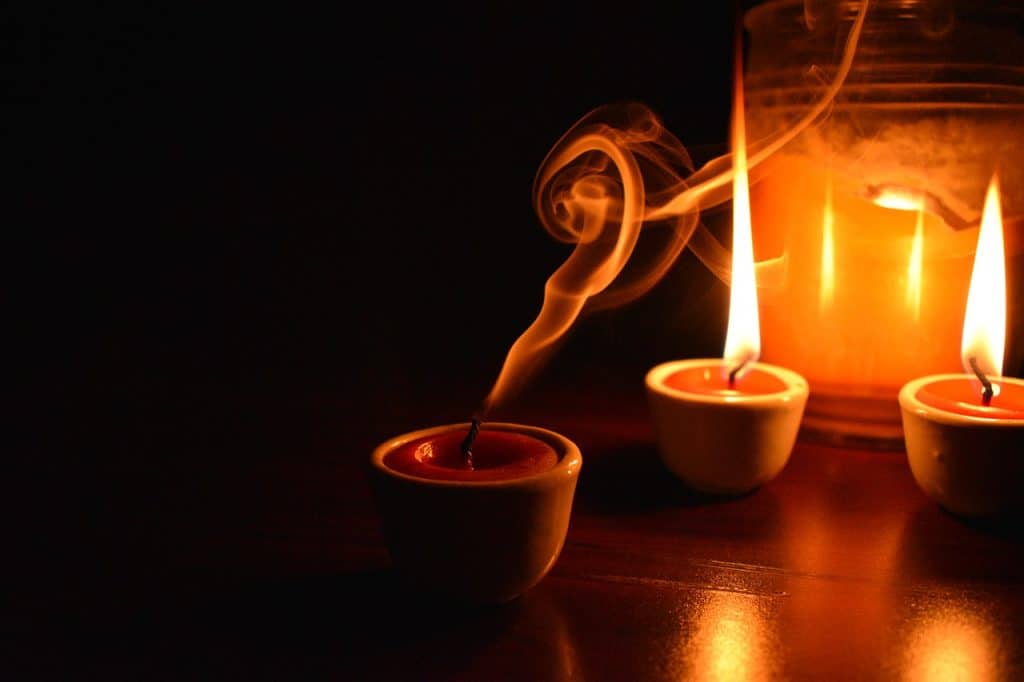For the longest time – or what seems to be the longest time – candles were in the background of things. Sure, you were likely to have one or two of them around if you were the romantic type…or if you were anticipating a blackout. But now, candles seem to be tremendously more popular than they once were.
Scented candles, in particular, appear to be quite trendy in the popularity area. And this has to do with the rising global interest in aromatherapy.
WHAT IS AROMATHERAPY?
Aromatherapy is a field of therapy that involves the use of aromatic – i.e. sweet or pleasant smelling compounds and materials – in treatment of physical and psychological ailments. Essential oils are the most common aromatic substances used in this field, as they are natural, plant based are completely organic. They have also been proven to yield favorable results in the treatments of physical and psychological conditions, within alternative medicine or as a form of complementary therapy (besides conventional medicine).
Experts in this field of aromatherapy are called aromatherapists and they usually produce and make use of high grade essential oils, which can be used during massages (i.e. in physical therapy), or inhaled. Water therapy and topical applications are other methods in which aromatherapy have been used to yield good results (i.e. the prevention, treatment and cure of ailments such as physical pain, nausea, stress, anger, mood swings, anxiety, depression etc).

The field of aromatherapy has a very long history in the world. It has been used by many ancient civilizations such as the Ancient Egyptians, the Ancient Chinese, the Ancient Greeks, the Ancient Indians and the Ancient Romans, in rituals and cultural applications, in the form of drugs, perfumes and cosmetic substances.
Major tools of aromatherapy such as aromatic essential oils and perfumes were usually very expensive and of very high value. In many case, they were seen as suitable forms of exchange for goods and services (because their high value made them acceptable forms of payments).
Some ancient scholars even released works on the healing properties of these oils and their use in ancient medicine and treatment. Such oils were extracted from plants such as rose, cinnamon, peppermint, sandalwood and many other natural sources with their own medicinal properties.
Nowadays, scented candles have become common tools of aromatherapy.
WHAT ARE SCENTED CANDLES?
“Scented candle” is a term that is used for candles to which aromatic essential oils and perfumes have been added, deliberately. Hence, when these types of candles are lit and they are burned, they give off the pleasant aroma of the specific type of scent or essential oil used.
There are other forms of candles that emit their own aroma (even when essential oils have not been added to them) e.g. beeswax candles. Tallow candles also have a distinct aroma of burning fat, when being burned. However, this scent is often described as unpleasant. Such types of candles cannot be described as scented candles.
WHAT IS A CANDLE’S THROW?
A candle’s throw can be defined as how well a candle’s scent is able to spread through the air, in order to circulate through a space. Scents throws from candles come in two forms; cold throw and hot throw.
Cold throw refers to the strength of a candle’s scent – or more precisely, the ability of a candle’s scent to fill a room – before being lit. Some candles have very strong fragrance before being lit, while others do not. Those that do are said to have strong cold throw, while those that don’t are said to have weak cold throw.
Hot throw on the other hand, refers to the strength of a candle’s scent during candle burning. Those whose fragrances have the ability to fill a room within a very short time are said to have strong hot throw and vice versa.

WHAT ARE A CANDLE’S SCENT NOTES?
A particular candle’s cold throw can be quite different from its hot throw, because of the action of heat on the volatile components that make up its scent profile. Hence, scented candles tend to smell in notes such as; top notes, middle notes, and bottom notes.
A candle’s top notes are the first noticeable fragrances given off during candle burning. They usually comprise of the most volatile components of its aromatic components (i.e. the components of the essential oils that have the lowest boiling points). Therefore, they are usually a lot more prominent in the cold throw (i.e. a candle’s top notes are usually more prominent before the candle has been lit).
Middle notes are scent profiles that are caused by components of the candle’s fragrance or essential oils, which have moderate melting points. Similarly, a candle’s bottom notes are due to the least volatile components of its aromatic materials.
WHAT AFFECTS THE STRENTH OF A CANDLE’S SCENT?
Things that affect the scent of a candle’s scent are some of the same things that affect its scent throws and scent notes.
The type of fragrance used is the most common factor (high quality essential oils tend to produce stronger scents and vice versa).
The quantity of fragrance used is another determining factor (when you use smaller quantities of fragrance, you tend to get weaker scents).
The type of candle wax used in making the candle also matters. Some types of waxes (e.g. paraffin wax) are very compatible with fragrances, and may require very little quantities.
DO MULTIPLE WICK CANDLES SMELL STRONGER?
One other factor that can affect the ability of a candle to smell stronger is the number of wicks used. Most candles have only one wick. However, those that have multiple wicks also exist.
Multiple wick candles tend to burn a lot faster, compared to single wick candles. However, because the fragrance of scented candles is always trapped in the candle wax, when the wax burns faster, fragrance is also released at a much faster rate. This is why multiple wick candles smell a lot stronger. It is also the reason why they are more expensive.




